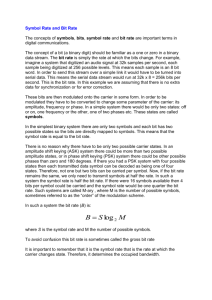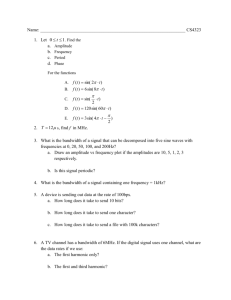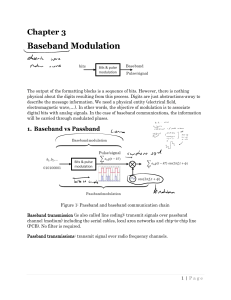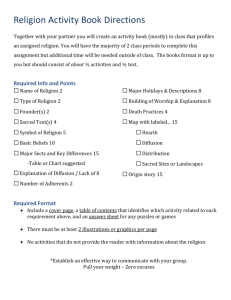bandwidth 0
advertisement
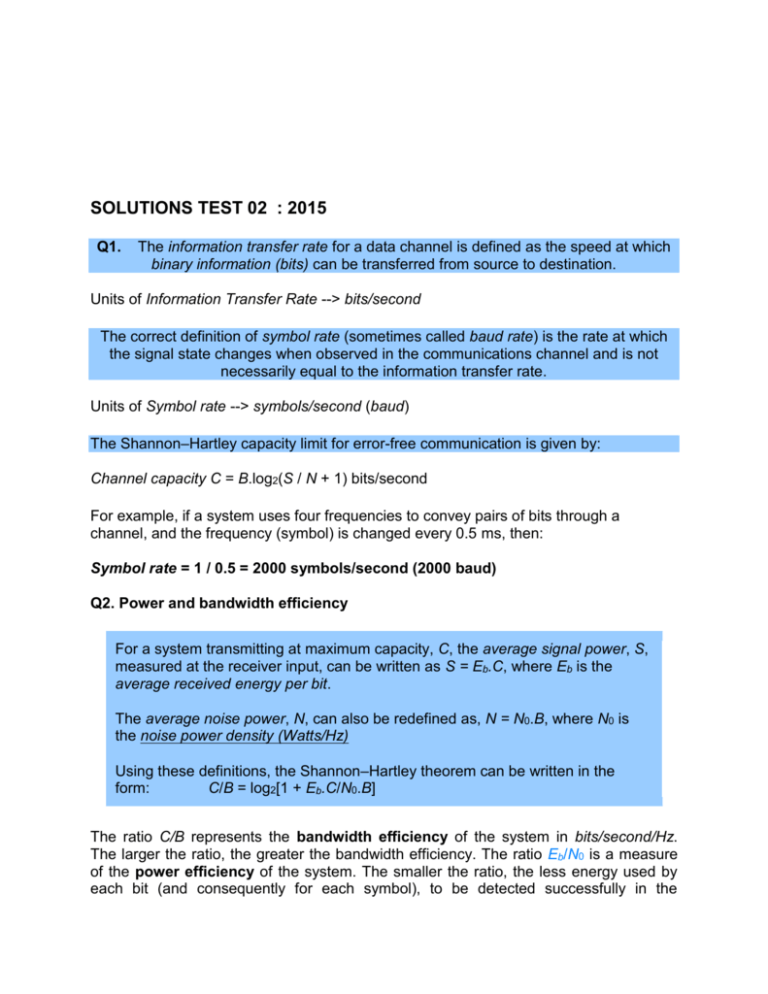
SOLUTIONS TEST 02 : 2015 Q1. The information transfer rate for a data channel is defined as the speed at which binary information (bits) can be transferred from source to destination. Units of Information Transfer Rate --> bits/second The correct definition of symbol rate (sometimes called baud rate) is the rate at which the signal state changes when observed in the communications channel and is not necessarily equal to the information transfer rate. Units of Symbol rate --> symbols/second (baud) The Shannon–Hartley capacity limit for error-free communication is given by: Channel capacity C = B.log2(S / N + 1) bits/second For example, if a system uses four frequencies to convey pairs of bits through a channel, and the frequency (symbol) is changed every 0.5 ms, then: Symbol rate = 1 / 0.5 = 2000 symbols/second (2000 baud) Q2. Power and bandwidth efficiency For a system transmitting at maximum capacity, C, the average signal power, S, measured at the receiver input, can be written as S = Eb.C, where Eb is the average received energy per bit. The average noise power, N, can also be redefined as, N = N0.B, where N0 is the noise power density (Watts/Hz) Using these definitions, the Shannon–Hartley theorem can be written in the form: C/B = log2[1 + Eb.C/N0.B] The ratio C/B represents the bandwidth efficiency of the system in bits/second/Hz. The larger the ratio, the greater the bandwidth efficiency. The ratio Eb/N0 is a measure of the power efficiency of the system. The smaller the ratio, the less energy used by each bit (and consequently for each symbol), to be detected successfully in the presence of a given amount of noise. Choosing a power-efficient modem type is particularly important in cellular handsets, for example, where the designer is trying to maximi ze battery lifetime . . Q3. The formula for channel capacity in a baseband channel (i.e. the useable bandwidth extends from 0 Hz to B Hz is given by: Channel Capacity C = 2Blog2M Thus for 28.8 kbps in 3.1 kHz, the number of symbol states required M is: M = antilog228800 / (2 x 3100) = 22.8 or 23 symbol states Sixty-four signalling states can support log264 = 6 bits per symbol. In a baseband channel the maximum signalling rate is equal to twice the available bandwidth. For a 2048 Mbps link, the symbol rate is thus 2048000 / 6 = 341.3 kbaud and the bandwidth required is 341000 / 2 = 170.7 KHz. Q4. The Shannon–Hartley theorem can be written as: C/B = log2[1 + Eb.C/N0.B] Now for Eb/N0 = –0.6 dB, the ratio Eb/N0 = 100.6/10 = 0.871. The bandwidth efficiency C/B that can be supported is thus: C/B = log2[1 + 0.871C/B] therefore: C/B = 0.6 bits/second/Hz (approximately). In a bandwidth of 3400 Hz, the system can thus operate at an information transfer rate of 3400 x 0.6 = 2040 bps. Q5. Q6.



